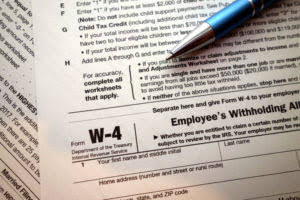
If the number of years remaining is less than 1, the depreciation rate for that tax year is 1.0 (100%). If you sell or otherwise dispose of your property before the end of its recovery period, your depreciation deduction for the year of the disposition will be only part of the depreciation amount for the full year. You have disposed of your property if you have permanently withdrawn it from use in your business or income-producing activity because of its sale, exchange, retirement, abandonment, involuntary conversion, or destruction.
Depreciation is allowable only for that part of the tax year the property is treated as in service. The recovery period begins on the placed in service date determined by applying the convention. The remaining recovery period at the beginning of the next tax year is the full recovery period less the part for which depreciation was allowable in the first tax year. You reduce the adjusted basis ($288) by the depreciation claimed in the fourth year ($115) to get the reduced adjusted basis of $173. You multiply the reduced adjusted basis ($173) by the result (66.67%). If this convention applies, the depreciation you can deduct for the first year that you depreciate the property depends on the month in which you place the property in service.
What is the double declining balance method of depreciation?
If you lease property to someone, you can generally depreciate its cost even if the lessee (the person leasing from you) has agreed to preserve, replace, renew, and maintain the property. Although we can’t respond individually to each comment received, we do appreciate your feedback and will consider your comments and suggestions as we revise our tax forms, instructions, and publications. Don’t send tax questions, tax returns, or payments to the above address. The “sum-of-the-years’-digits” refers to adding the digits in the years of an asset’s useful life. For example, if an asset has a useful life of 5 years, the sum of the digits 1 through 5 is equal to 15 (1 + 2 + 3 + 4 + 5).
Figure your depreciation deduction for the year you place the property in service by multiplying the depreciation for a full year by a fraction. The numerator of the fraction is the number of full months in the https://www.bookstime.com/articles/what-is-order-of-liquidity year that the property is in service plus ½ (or 0.5). You figure depreciation for all other years (including the year you switch from the declining balance method to the straight line method) as follows.
The drawbacks of double declining depreciation
The best reason to use double declining balance depreciation is when you purchase assets that depreciate faster in the early years. A vehicle is a perfect example of an asset that loses value quickly in the first years of ownership. The result is your basic depreciation rate, expressed as a decimal. (You can multiply it by 100 to see it as a percentage.) This is also called the straight line depreciation rate—the percentage of an asset you depreciate each year if you use the straight line method. The depreciation expense recorded under the double declining method is calculated by multiplying the accelerated rate, 36.0% by the beginning PP&E balance in each period.
- However, you still can’t depreciate an asset to a value less than its salvage value with the hard limit of zero.
- This chapter explains what property does and does not qualify for the section 179 deduction, what limits apply to the deduction (including special rules for partnerships and corporations), and how to elect it.
- By dividing the $4 million depreciation expense by the purchase cost, the implied depreciation rate is 18.0% per year.
- Generally, you are considered to actively conduct a trade or business if you meaningfully participate in the management or operations of the trade or business.
- This tool lets your tax professional submit an authorization request to access your individual taxpayer IRS online account.
- You can depreciate the part of the property’s basis that exceeds its carryover basis (the transferor’s adjusted basis in the property) as newly purchased MACRS property.
If you are married, how you figure your section 179 deduction depends on whether you file jointly or separately. If you file a joint return, you and your spouse are treated as one taxpayer in determining any reduction to the dollar limit, regardless of which of you purchased the property or placed it in service. If you and your spouse file separate returns, you are treated as one taxpayer for the dollar limit, including the reduction for costs over $2,890,000. You must allocate the dollar limit (after any reduction) between you equally, unless you both elect a different allocation.
Taking a time-out for math
If the double-declining depreciation rate is 40%, the straight-line rate of depreciation shall be its half, i.e., 20%. If, for example, an asset is purchased on 1 December and the financial statements are prepared on 31 December, the depreciation expense should only be charged for one month. For example, if an asset has a useful life of 10 years (i.e., Straight-line rate of 10%), the depreciation rate of 20% would be charged on its carrying value. Consider a widget manufacturer that purchases a $200,000 packaging machine with an estimated salvage value of $25,000 and a useful life of five years. Under the DDB depreciation method, the equipment loses $80,000 in value during its first year of use, $48,000 in the second and so on until it reaches its salvage price of $25,000 in year five. In contrast to straight-line depreciation, DDB depreciation is highest in the first year and then decreases over subsequent years.
For passenger automobiles and other means of transportation, allocate the property’s use on the basis of mileage. For Sankofa’s 2023 return, gain or loss for each of the three machines at the New Jersey plant is determined as follows. The depreciation allowed or double declining balance method allowable in 2023 for each machine is $1,440 [(($15,000 − $7,800) × 40% (0.40)) ÷ 2]. The adjusted basis of each machine is $5,760 (the adjusted depreciable basis of $7,200 removed from the account less the $1,440 depreciation allowed or allowable in 2023).

